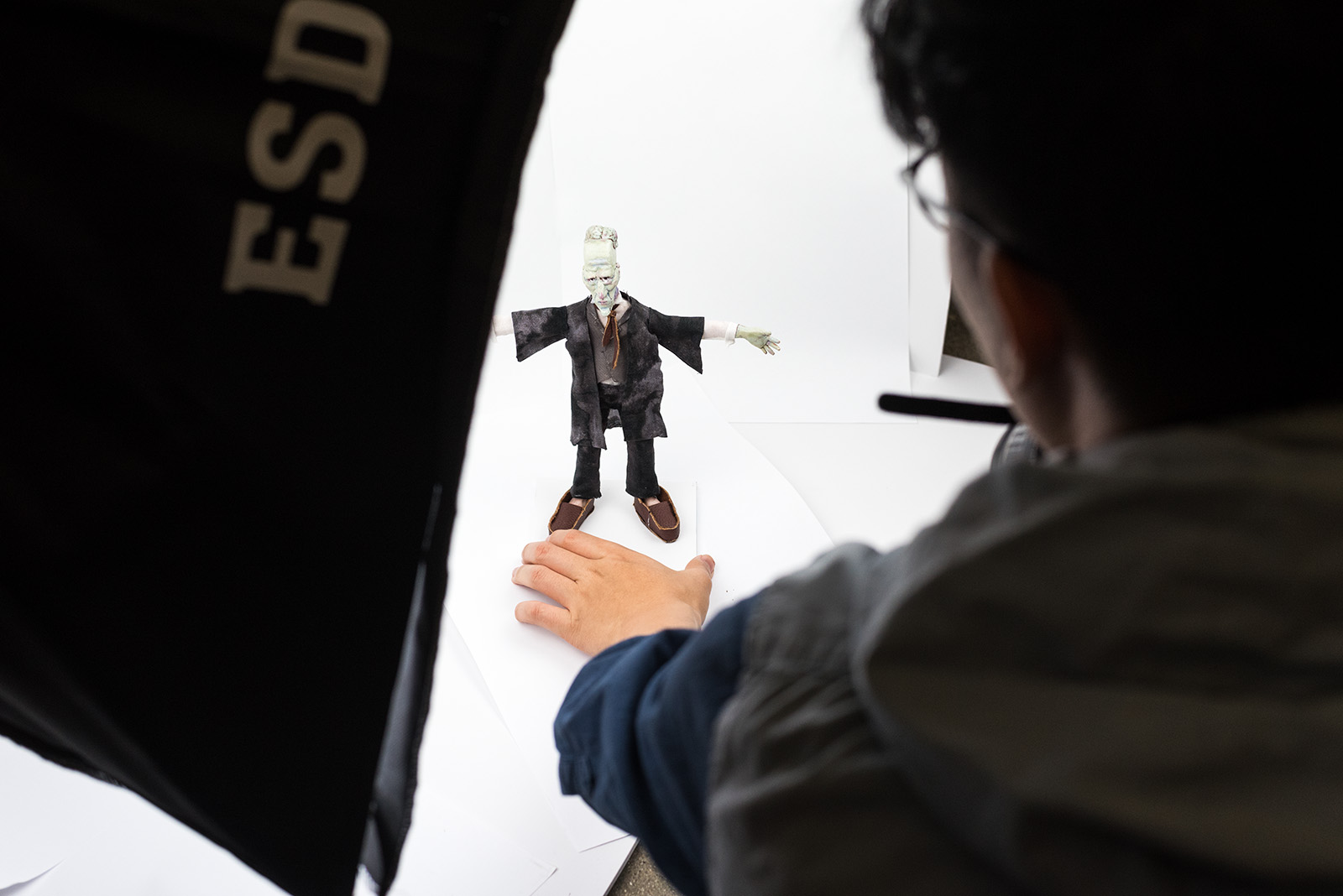Student-created video game to raise questions about relationship between art, AI

Jumo Yang, a third-year design media arts student, is helping create a video game using photogrammetry, a technique that consists of creating physical objects and scanning them into a 3D format on a computer. (Joe Akira/Daily Bruin)
By Ethan Pak
June 9, 2018 12:13 a.m.
Players of an upcoming video game can encounter a humanoid robot in a virtual art factory.
Currently untitled, the game is a collaboration between Jingjie Chen and Jumo Yang, fourth-year and third-year design media arts students, respectively. Chen and Yang met in design media arts associate professor Eddo Stern’s world building class, and at the end of which they decided to design a game together as an independent study project under Stern’s guidance. Chen said the team is currently developing the factory space for the 3D game and hopes to create a narrative with themes that underscore a possible relationship between art and technology.
“We want to raise the question (of) whether art is a privilege of … humans, or can robots and artificial intelligence make art and appreciate art?” Chen said.
To create the game, the team utilized photogrammetry, a technique in which handmade sets or objects are built, scanned and formatted into a 3D model on a computer, Chen said. The students were drawn to the handmade aspect of the craft after discovering games like “Harold Halibut,” which utilized photogrammetry, she said.
“We were always working in digital for all of our projects, and we think there’s something precious about the imperfections of handmade stuff. … There’s some things that can’t be replicated in 3D modeling,” Chen said. “Since our theme is about machines making art and people making art, this whole process (in which) we handmade something and the machine helped us to make some (models is) a collaboration between people and machines.”
Before making sets by hand, such as that of the factory, the pair had to figure out how to preserve the imperfect aesthetic of handmade objects even after they have been scanned into a 3D model, Stern said. In order to retain the aesthetic, he said the two decided to deliberately make their sets flawed by, for instance, leaving tape on objects when they are scanned.
At a certain point in the game, players will encounter the factory owner, a robot disguised as a human. In the conceptualization stages, Yang said he and Chen conceived the robot to be a famous art dealer who owns the abandoned factory and wants to change people’s taste in art. By playing the game, players will learn why the robot is interested in art and why he wants to change the culture behind it, he said.
Although the game approaches the question of whether artificial intelligence can create art, Chen said she does not plan to propose an answer in the game. By interacting with the factory and the virtual environment while following along with the game’s narrative, players will be encouraged to start thinking about the topics without necessarily considering an answer, she added.
Despite the game still being in its beginning stages, Chen said players will be able to control the main character, a young boy, and navigate him as he explores and finds a way out of the factory. To move past certain locked doors, players will need to turn on multiple machines in an area. Once all the machines are activated, they will generate art pieces that players can use to unlock doors and progress to the next stages of the factory. As the players explore more, they will eventually enter spaces personal to the robot, like his office, where they can learn more of his story.
“We will have a more complex narrative background for the robot character,” Chen said. “For the player, one of the gameplay highlights would be to find out his story – why he wants to make art, why he wanted to use a factory to make art.”
Chen said the team is currently focused on creating the factory by continuing to scan handmade models and coding the game. Despite the team effort, Stern said they have divided the labor in an untraditional fashion, in which both are designing characters and costumes, unlike conventional game creators who usually have one person, for instance, programming and another modeling characters and sets.
“They’re really working to try to preserve a unique aesthetic to themselves but to allow (their) two aesthetics to work together in the same environment, which is always a challenge when working together,” Stern said.


